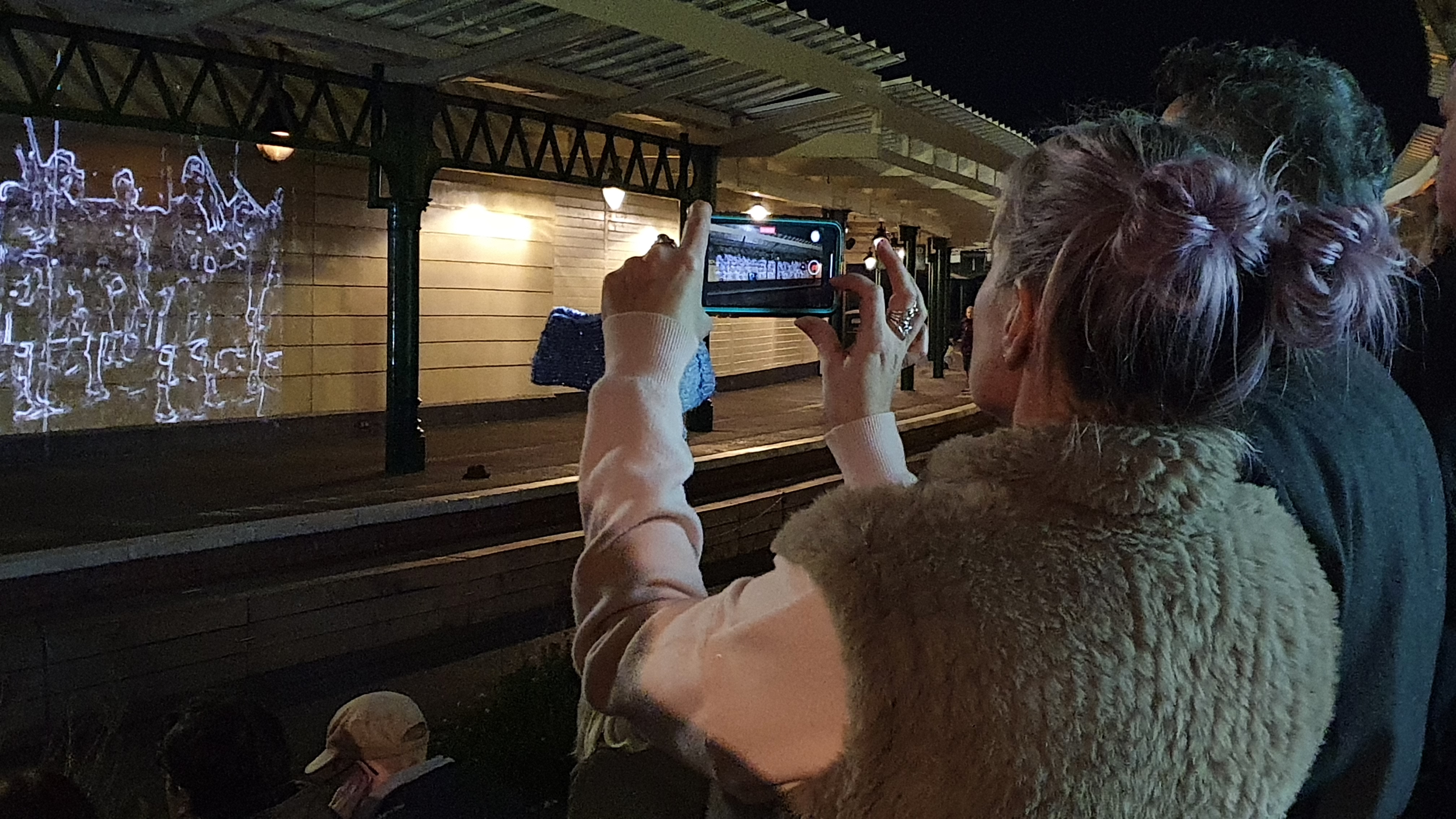Walking with Ghosts features an original score, composed by Kent alum Thom Roberts. Here he explains how he approached composing the score and talks about how he designed numerous elements to work together in the final piece.
The music for ‘Walking With Ghosts’ was written for double bass, cello, violin, piano, and electronics/textures. We didn’t want anything too grand or overbearing, as we felt that this had been covered many times before in film soundtracks. We really wanted a fresh approach. My initial instinct was to use solo instruments to represent the individual stories gathered through Helen and Mark’s research, and then use the textures as more of an abstract, immersive backdrop to allude to the ghostly elements of the exhibition.
My background is in creating music for film and television, so I am constantly trying to evoke emotion and narrative through the music I write. We treated the music I wrote like a film soundtrack, taking the audience through the emotional journey of ‘Walking With Ghosts’.
Below are a few clips from the soundtrack, isolated elements from the music so you can hear the effect I was looking for and why I chose to include them:
Walking With Ghosts – Ghostly Textures
This is the opening cue from the exhibition. For me, it was all about pulling the audience into the world of the installation. The haunting and mysterious sounds you hear were created by manipulating recordings from the violin, piano, and other instruments. We filtered off the top end of the sound and added a long reverb, creating a washed and distant sound that I felt was the right tone for the exhibition’s opening.
Departures – Rhythmic Movement
The brief for this piece was all about movement, the feeling of entering the unknown and the uncertainty we feel when leaving a place, knowing that it will be a long time until we return. We wanted to imagine the train station as it was, with soldiers constantly marching through it. We wanted this energy to be reflected in the music, so we used rhythmic techniques, including bubbling synthesizer arpeggios (a technique that constantly revolves up and down) and mirrored this with a similar but slightly more emotive piano line. I think it adds to the nervous energy the soldiers may have been feeling.
Displaced – Double Bass
Textures Realism was important to the team. We didn’t want to create a suite of music that only pointed towards the “glory” of war. Instead, we wanted to reflect the harsh realities that many people go through during times of conflict. We aimed for a visceral, guttural tone, and for that, I asked bass player Rory Dempsey to use extended techniques on the double bass. Traditionally, you’d expect a bouncing jazz bass or an orchestral bass playing grand lines from this instrument. However, here we bowed the instrument in unique and interesting ways to hopefully create some distinct and harrowing effects.
Loss – Cello
Throughout the exhibition, there were many recorded voiceover elements featuring people reflecting on the friends and loved ones they had lost. We didn’t want the music to be overpowering in this section, so the majority of this piece is a slow, mournful textural pad, allowing the voiceovers to take the lead. However, at 2:27 in the piece, we really wanted to have a big ‘moment’ where the audience can reflect, emote, and hopefully become swept up in the immersive nature of the exhibition. The attached clip features the cello played by Fraser Bowles. We chose the cello for its brilliant emotional yet grand quality. It’s the instrument in the orchestra that is closest to the human voice, which is perhaps why it is often used to evoke emotion.
Folkestone – Violin
We wanted to ensure that place was an integral part of our exhibition. As we hear in the voiceover, the Folkestone we hear about is full of excitement and was a vital place where people would come and go during the 20th century. We felt that the violin, being so nimble and agile, was the perfect choice to represent the town. Played by violinist Natalia Tsupryk, the solo line weaves up and down, reflecting the journey and transformation.
Remembering – Marching Pulse
The emotional climax of the piece, “Remembering,” is a slow-moving, poignant ending to the exhibition. Underneath the layers of piano, strings, and textures, there is a very simple pulse. This was created to represent the soldiers marching past the cenotaph, which was the catalyst for ‘Walking With Ghosts.’ The sound itself was made by accident – I was recording piano for another section of the soundtrack and accidentally knocked my piano stool. The resulting noise sounded eerily similar to a march, so I recorded it and had Rory Dempsey double it by tapping on the body of his bass. Together, they create a rich and deep bass hit that I thought reflected the march well.
Together, these individual elements come together to create a moving and powerful soundtrack that complement the fully immersive artwork.

